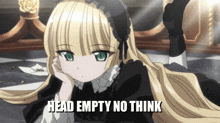
GuidanceIf you want to translate into another language, please use the translate feature in your browser.

Opening Scene — The Coffee Shop Clue
I was sitting in a corner of a coffee shop, reading. Or at least, that’s what it looked like. In truth, my eyes kept drifting to the man at the counter. He ordered a drink, paid in cash, and left without waiting for change. Odd. A few minutes later, the barista quietly slipped the extra coins into a tip jar without a word.
Most people wouldn’t have noticed. But once you start living with situational awareness, small details like this stand out — and sometimes, they lead to bigger stories.
What Is Situational Awareness?
Situational awareness is the ability to perceive your environment, understand what’s happening, and anticipate what might happen next. It’s a skill used by intelligence officers, detectives, pilots, and even elite athletes — but it’s just as valuable in everyday life.
It involves three layers:
- Perception — Noticing details: sights, sounds, behaviours, patterns.
- Comprehension — Understanding what those details mean in context.
- Projection — Anticipating possible outcomes based on what you’ve observed.
Why It Matters in Daily Life
- Safety — Spotting unusual behaviour in a crowd can help you avoid danger.
- Problem-Solving — Detecting small inconsistencies can reveal the root of a problem before it grows.
- Better Decisions — Awareness helps you act based on reality, not assumption.
- Empathy — Observing body language and tone can help you understand unspoken emotions.

From Observation to Reasoning — Thinking Like a Detective
Observation is only the first step. The second is reasoning — connecting the dots between what you see and what it might mean. Detectives do this constantly:
- They notice a muddy footprint near a window.
- They recall it rained last night.
- They connect it to a missing item in the house.
In everyday life, this might mean:
- Noticing a colleague’s desk is unusually tidy.
- Remembering they mentioned a job interview.
- Predicting they might be preparing to leave the company.
Real-Life Example 1 — The Late-Night Walk
A friend once told me about walking home late at night. She noticed a man across the street who seemed to match her pace. At first, she thought it was coincidence. But then she observed:
- He wasn’t looking at his phone.
- He crossed the street when she did.
- He slowed down when she slowed down.
Her situational awareness kicked in. She changed direction toward a brightly lit convenience store. The man kept walking past. Whether or not he meant harm, her awareness and quick reasoning kept her safe.
Real-Life Example 2 — The Missing Wallet
One afternoon, I was in a crowded train station. A man in front of me kept patting his back pocket, looking uneasy. I noticed another person standing unusually close behind him, moving in sync with every step.
The moment the train doors opened, the second person slipped away quickly into the crowd. The man in front reached for his pocket — and froze. His wallet was gone.
If I had been quicker to connect the dots — the nervous patting, the shadowing movement — I might have been able to warn him. That moment taught me that awareness isn’t just about noticing, but also about acting when the signs align.
Real-Life Example 3 — The Office Meeting Shift
During a weekly team meeting, I noticed something subtle:
- A usually talkative colleague stayed unusually quiet.
- She kept glancing at her phone, then at the manager.
- When a certain project was mentioned, her shoulders tensed slightly.
Later, I learned she had just received news that her proposal was being reassigned to someone else. My awareness of her body language allowed me to approach her privately afterward, offering support before the frustration could spill into the group dynamic.
This wasn’t about danger — it was about empathy. Situational awareness can help us read the emotional “temperature” of a room and respond in ways that strengthen relationships.
Real-Life Example 4 — The Apartment Lights Mystery
For weeks, I passed by the same apartment building on my evening walks. One unit on the third floor always had its curtains drawn, but the lights inside flickered in an odd pattern — not like a TV, not like normal room lighting.
One night, I noticed something stranger:
- The flicker stopped abruptly the moment a car pulled up outside.
- A shadow moved quickly away from the window.
- The next day, the unit’s mailbox was overflowing, as if no one had been home for days.
Later, I learned from a neighbour that the apartment’s owner had been away on business — and the police had just investigated a break-in attempt. Those flickering lights? Likely a burglar’s flashlight, searching in the dark.
It was a reminder that sometimes, the smallest, most ordinary details can be the first signs of something much bigger.

How to Build These Skills
- Practice Active Observation — When you enter a room, note exits, people’s positions, and unusual details.
- Ask “Why?” — If something feels off, mentally explore possible reasons.
- Stay Present — Avoid being lost in your phone or thoughts in public spaces.
- Connect the Dots — Link observations to possible scenarios, even as a mental exercise.
- Reflect — After an event, review what you noticed and what you missed.
Closing Reflection
“Awareness turns the ordinary into the extraordinary — because every detail is a clue, and every clue is a chance to understand the world better.”
Living like an intelligence agent doesn’t mean being paranoid. It means being present, curious, and ready to see what others overlook. And sometimes, those overlooked details can change everything — whether it’s avoiding danger, preventing loss, or uncovering a mystery hiding in plain sight.
